How to Photograph the Northern Lights
Capturing the Aurora Borealis, or Northern Lights, is a breathtaking experience that results in stunning, otherworldly images. If you’re wondering how to photograph the Northern Lights, this guide covers essential northern lights photography tips to help you get the best shots.
From choosing the right gear, including recommended Tamron wide-angle lenses, to preparing for freezing conditions, you’ll learn everything needed to capture the magic of the night sky.
What you will learn in this article:
- How to find the best locations for viewing the Northern Lights, including tips on escaping light pollution and choosing remote, dark-sky destinations.
- How to use aurora forecast tools and weather apps to determine the best times and conditions for photographing the aurora borealis.
- Which Tamron lenses are ideal for night sky photography, with recommendations for both full-frame and APS-C mirrorless camera systems.
- How to properly set up your gear for long exposure shooting, including tripod use and lens considerations to maximize sharpness and light capture.
- What camera settings to use when photographing the Northern Lights, covering ISO, aperture, shutter speed, and manual focus techniques for optimal results
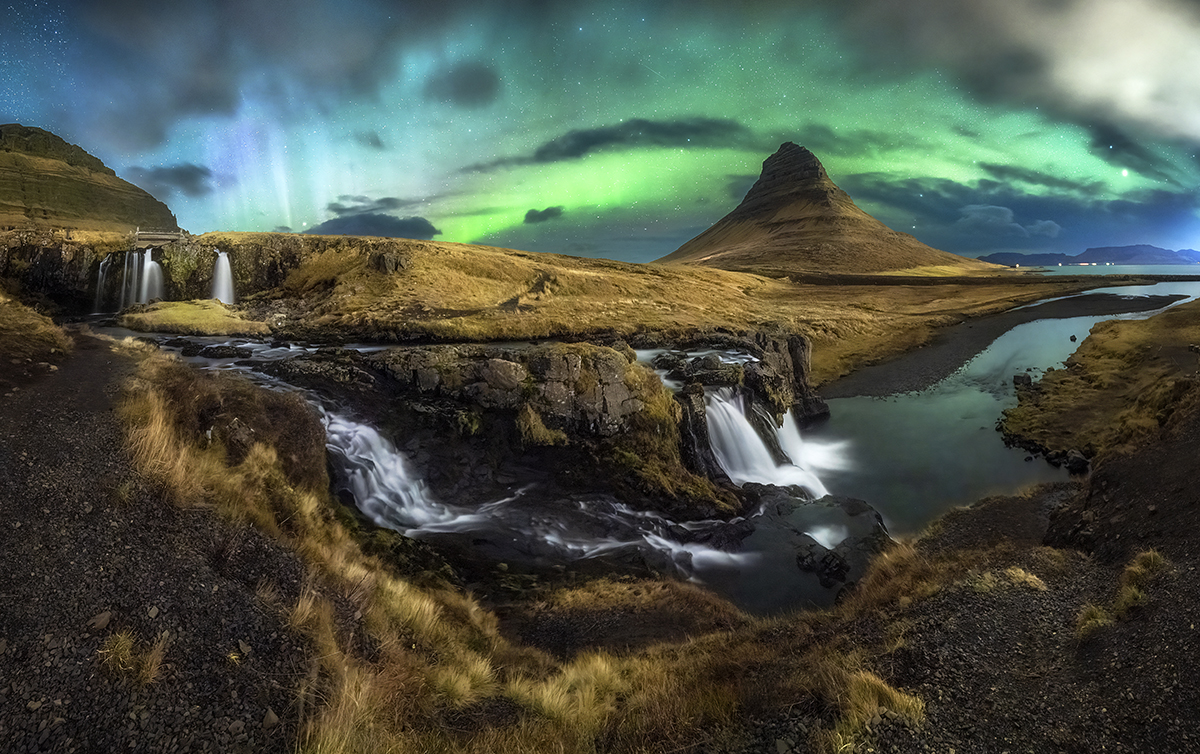
How To Photograph the Northern Lights: 12 Pro Tips
TIP 1: Find a Dark Location
The top tip for how to photograph the Northern Lights is finding the right place to shoot. Light pollution can diminish the visibility and impact of your aurora borealis photography. Choose remote dark sky locations for northern lights, far from city lights, to ensure the sky is as dark as possible. National parks, mountain ranges, or rural areas are ideal for night sky photography.
TIP 2: Check the Aurora Forecast
Websites and weather forecast apps like Aurora Alerts and AuroraWatch can predict when and where the Northern Lights will appear. Look for nights with clear skies and high aurora activity (Kp Index for Northern Lights is 3 or above).
TIP 3: Use the Right Gear
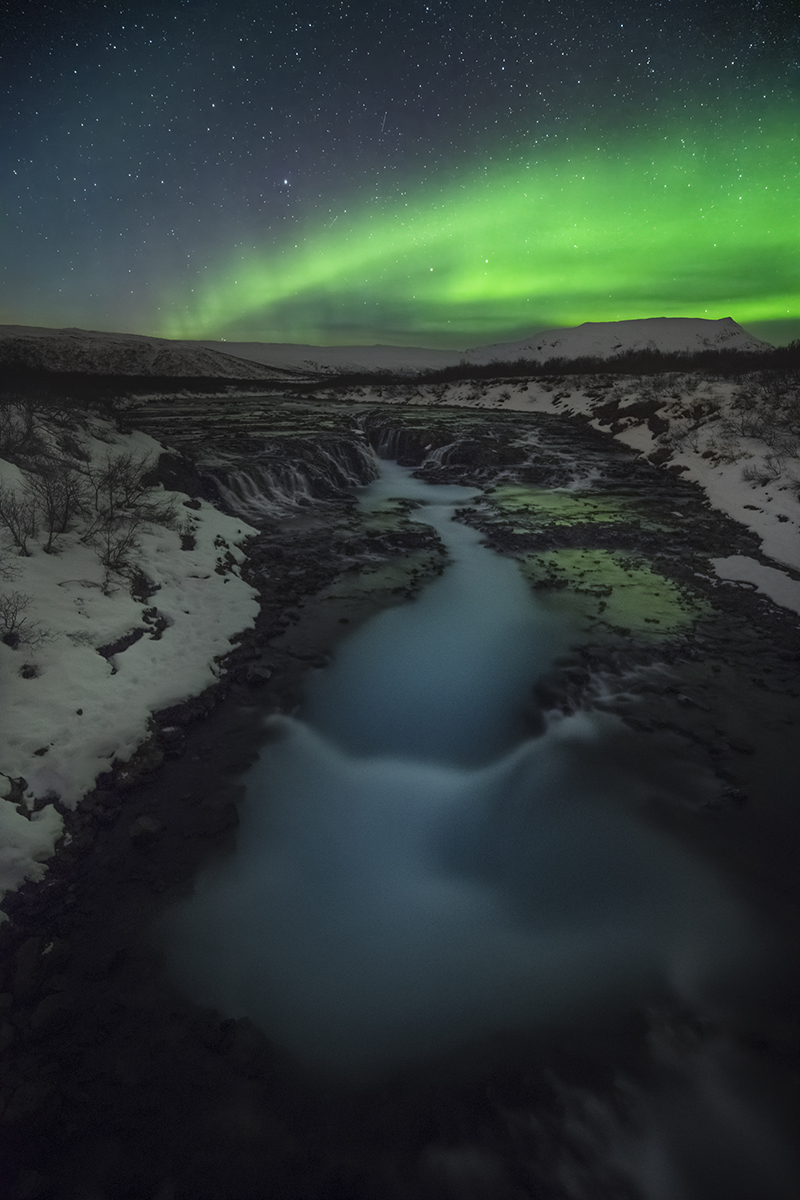
Lenses Matter: Why a Tamron Wide-Angle Lens is Perfect
When photographing the auroras, a wide field of view and fast aperture are critical. Wide-angle lenses allow you to capture more of the night sky, while a fast aperture ensures you gather enough light during long exposures.
- Tamron 17-28mm f/2.8 Di III RXD (for Sony E-mount): Why it’s great: This lens combines an ultra-wide focal length (17mm) with a constant f/2.8 aperture, which is perfect for low-light conditions. It allows you to include sweeping landscapes alongside the auroras while keeping everything sharp and detailed.
- Tamron 11-20mm f/2.8 Di III-A RXD (for APS-C Sony E, Fujifilm X and Canon RF mounts): Why it’s great: For photographers with APS-C cameras, this lens gives a focal length of 16.5-30mm. This range is perfect for wide shots of the auroras. The bright f/2.8 aperture helps you gather as much light as possible in dark environments.
- Tamron 20-40mm f/2.8 Di III VXD (for Sony E-mount): Why it’s great: This flexible zoom lens is perfect for wide shots of the auroras at 20mm. It also works well for tighter shots with interesting foregrounds at 40mm. Its fast aperture ensures excellent performance in low light.
Using Tamron lenses helps you capture high-quality images. They provide sharpness from edge to edge and reduce distortion. These features are important for photographing large scenes, like the Northern Lights. They also feature moisture-resistant weather sealing for confidence in shooting in cold weather.
TIP 4: Use a Sturdy Tripod
Stability is key when shooting long exposures and learning how to photograph the Northern Lights. A sturdy tripod will keep your camera steady and prevent blur from even the slightest movement.
TIP 5: Northern Lights Camera Settings
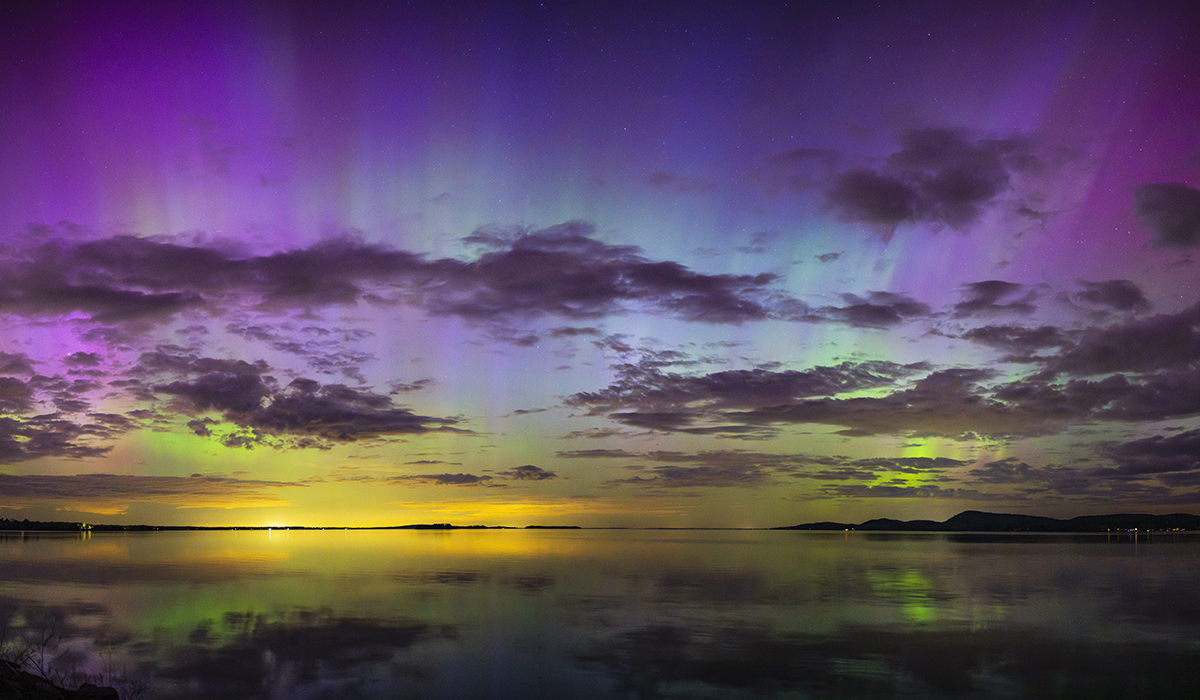
Here are the best settings for northern lights photography. Switch your camera to Manual Mode to have complete control over the exposure.
- ISO: Start with a higher ISO from 800 to 1600 to balance light sensitivity and image noise. Adjust to the high iso 3200 if needed.
- Aperture: Use the widest aperture available on your lens (e.g., f/2.8 or lower). Wide apertures gather more light, which is essential for capturing faint auroras.
- Shutter Speed: Start with a 10-20 second exposure. Adjust the exposure time based on the brightness and movement of the auroras. Use shorter exposures for fast-moving lights. Use longer exposures for lights that stay still.
- White Balance: Set to “Tungsten” for a cooler, blue-toned sky, or “Daylight” for a more natural, green aurora effect.
TIP 6: Focus for Sharp Images
Photographers always recommend using manual focus for night photography since autofocus struggles in low-light conditions. Set your lens to infinity (∞) or slightly back from infinity to ensure stars and the auroras remain sharp. Use live view and zoom in to fine-tune the focus on distant stars.
TIP 7: Compose Your Shot
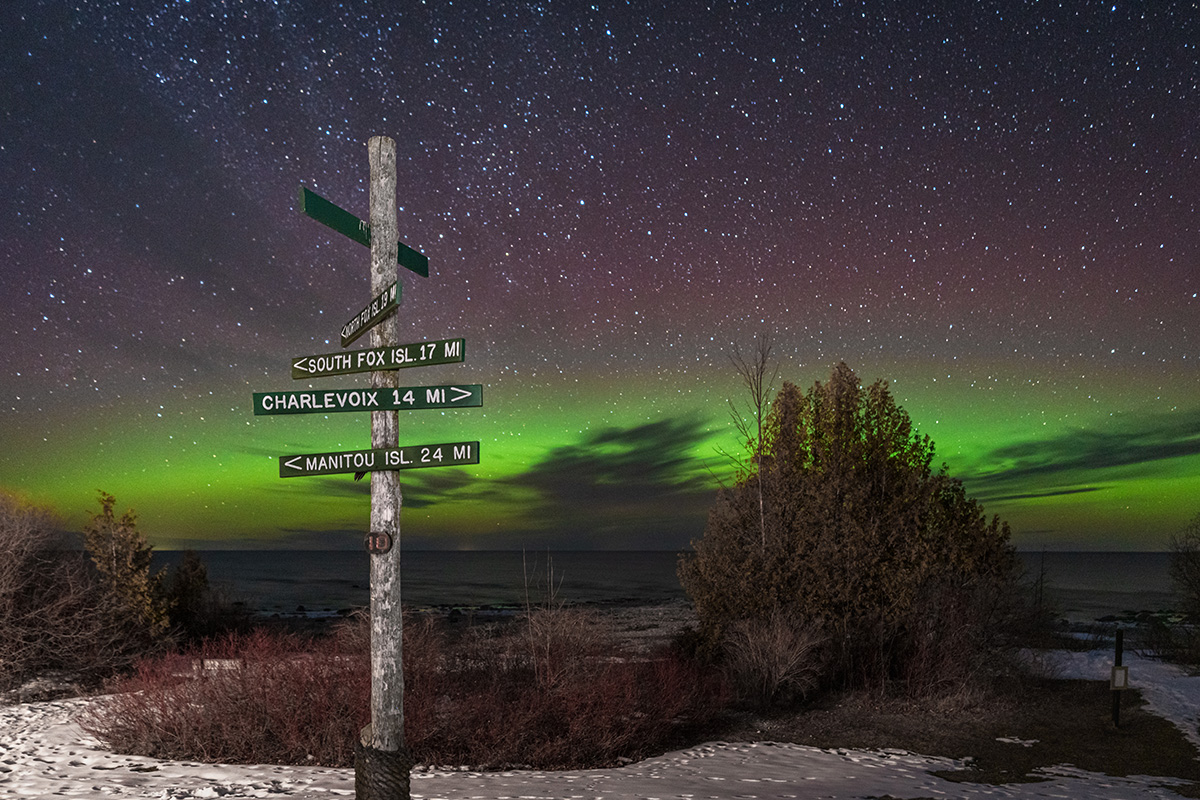
To elevate your photos when learning how to photograph the Northern Lights, include interesting foreground elements such as mountains, trees, cabins, or frozen lakes. These elements add depth and context to your composition. Position yourself to maximize the auroras’ movement across the sky.
TIP 8: Take Test Shots and Adjust
Start by taking a few test shots and review the exposure, sharpness, and composition. Adjust your shutter speed, ISO, or focus as needed. Don’t rush—sometimes the lights intensify, so be ready!
TIP 9: Use a Remote Shutter Release
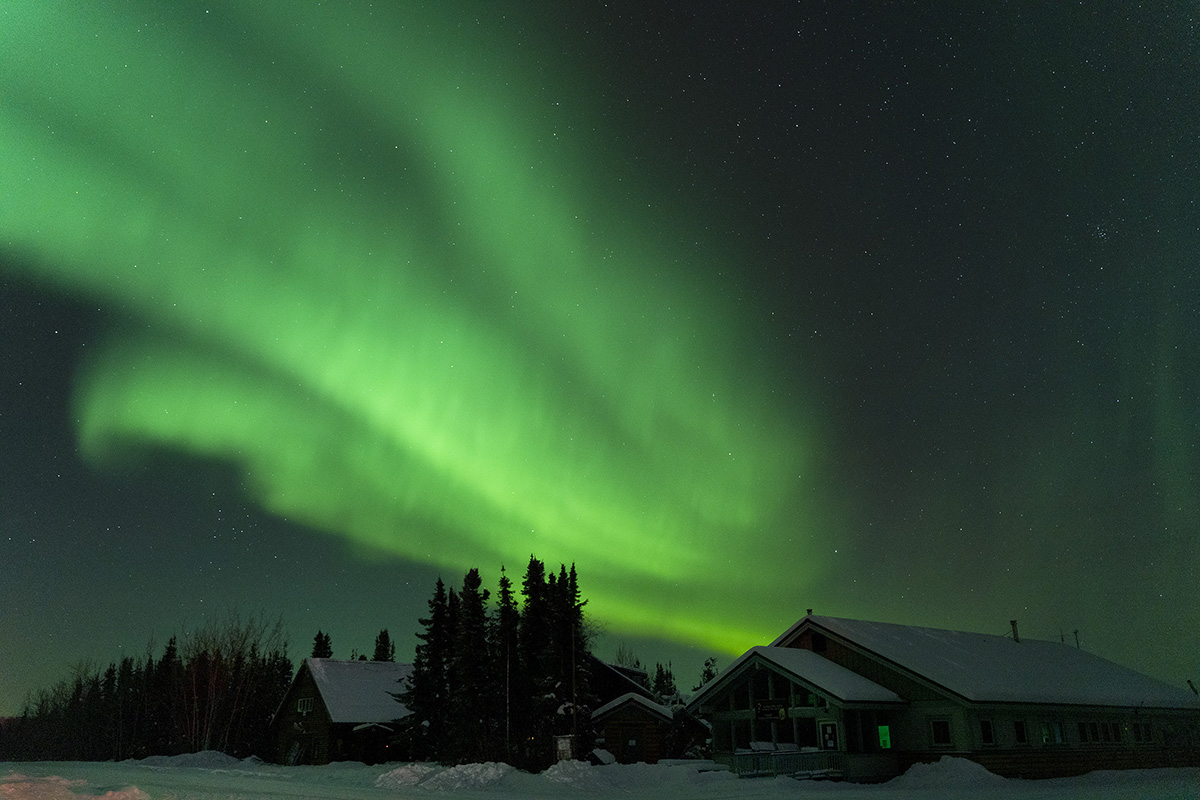
To avoid camera-shake during long exposures, use a remote shutter release. You can also use your camera’s self-timer.
TIP 10: Be Patient
Auroras are unpredictable and can vary in intensity. Be patient and keep watching the sky. The perfect display might appear when you least expect it!
TIP 11: Post-Processing

After capturing your shots, use software like Adobe Lightroom or Photoshop for post-processing aurora borealis photos to enhance your images. Adjust settings such as exposure, highlights, contrast, and saturation to make the colors pop. Fine-tuning sharpness and reducing noise can also improve your final result.
TIP 12: Stay Warm and Protect Your Gear
Photographing the Northern Lights often means enduring long hours in frigid temperatures. Staying warm and ensuring your gear performs well in these conditions are critical to having a successful and enjoyable experience. Here are tips on what you can do and bring:
How to Photograph the Northern Lights Comfortably: Dress for the Cold
Proper clothing is essential when spending extended time outdoors in freezing weather. Dressing in layers allows you to adjust your clothing as needed:
- Base Layer: Use moisture-wicking thermal clothing to keep sweat away from your skin. Merino wool or synthetic materials work best.
- Middle Layer: Add an insulating layer such as a fleece or down jacket to trap heat. Down provides an excellent warmth-to-weight ratio for extreme cold.
- Outer Layer: Wear a waterproof and windproof shell to protect you from snow, wind, and moisture. Look for jackets with insulation if you expect extreme temperatures.
- Hands and Feet: Wear insulated, waterproof boots, thick wool socks, and hand/foot warmers for additional comfort. Gloves are critical—use thin touchscreen gloves for camera adjustments under heavy, insulated mittens.
Keep Your Hands Warm While Operating Your Camera
Cold hands can make it difficult to control your camera settings, and frostbite is a real risk. Here’s how to protect your hands:
- Use fingerless gloves with mitten covers or gloves with flip-back tips so you can operate your camera without exposing your hands completely.
- Add disposable hand warmers inside your gloves or pockets. They’re inexpensive and can last for hours.
- Heated rechargeable gloves are another option if you plan to shoot for long periods.
Protect Your Camera Gear in Cold Conditions
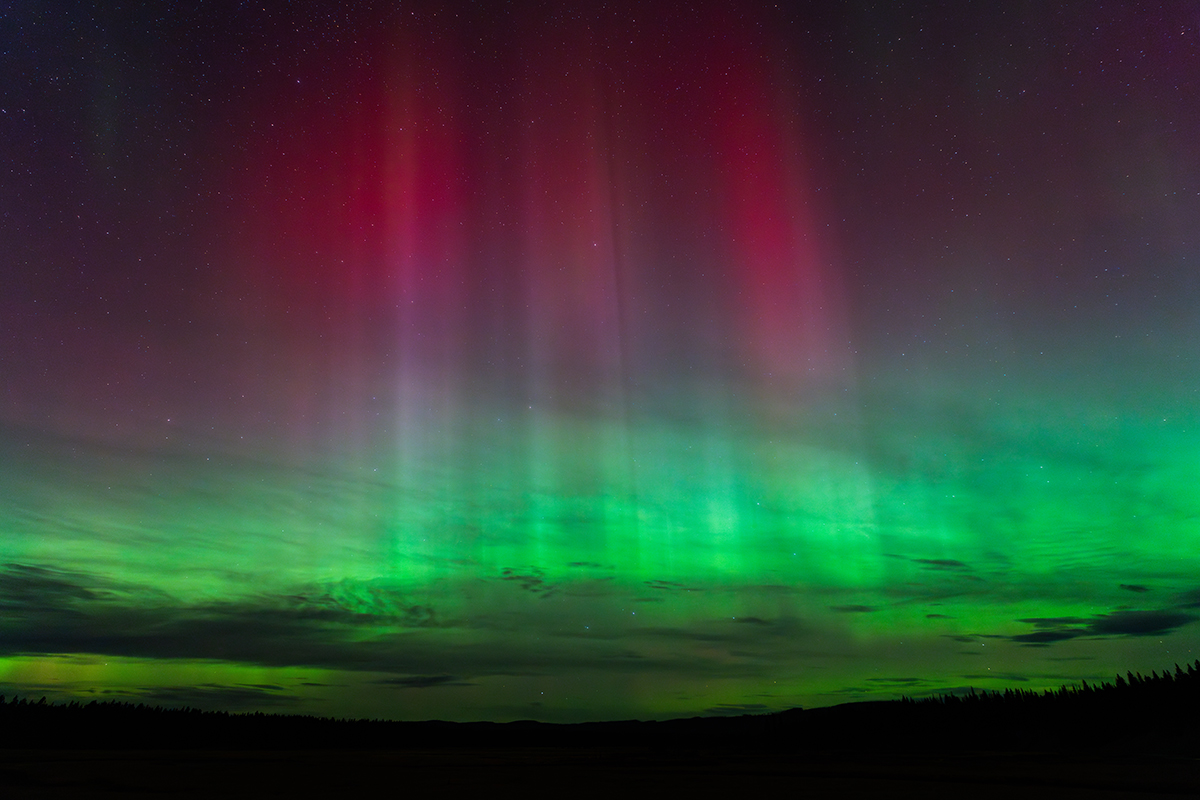
Cameras and lenses can function well in cold weather, but they require special care to prevent damage and ensure they perform properly:
- Bring Spare Batteries: Cold weather significantly reduces battery life. Carry multiple fully charged batteries and keep them in an inner pocket close to your body to keep them warm. Swap them out as needed, rotating between warm and cold batteries.
- Keep Gear Insulated: Use a camera bag with padded insulation to protect your equipment from the cold and prevent frost buildup. Wrapping cameras in soft cloths or scarves inside your bag also helps.
- Prevent Condensation: When moving your camera from the cold into a warm environment (e.g., indoors or into a car), condensation can form inside the camera and lens, which may cause damage. To avoid this, place your camera in a sealed plastic bag or airtight camera pouch before bringing it inside. Let it warm up slowly to room temperature before removing it.
Keep Yourself Fueled and Comfortable
- Bring a thermos of hot drinks like tea, coffee, or hot chocolate to keep you warm and hydrated throughout the night.
- Pack high-energy snacks (e.g., nuts, granola bars, or chocolate) to maintain your energy levels while waiting for the auroras.
- Consider a folding chair or camping mat to sit on when waiting—standing for hours in the cold can be exhausting.
Bring Gear-Specific Warmers
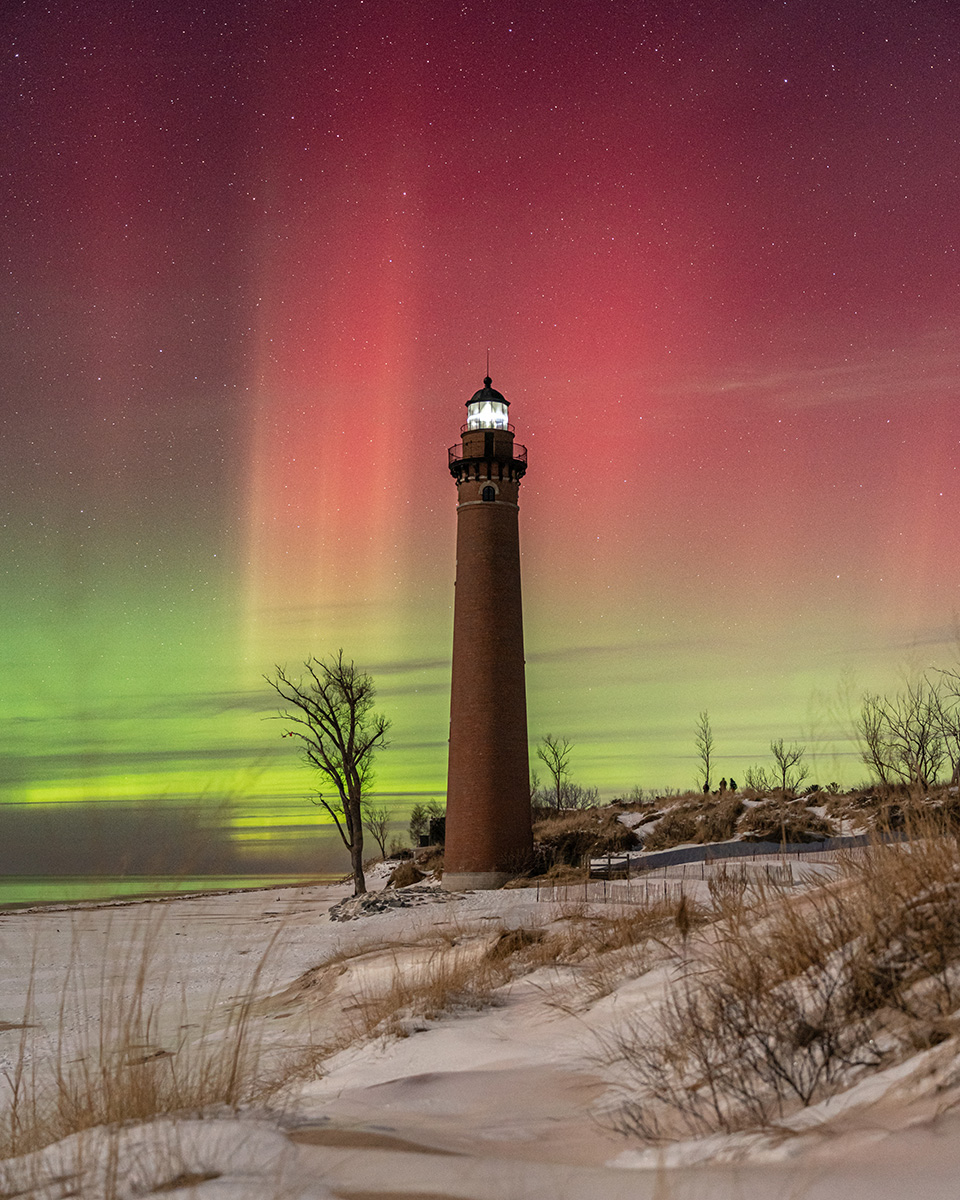
If you’ll be photographing for extended periods, lens warmers can help prevent frost or condensation from forming on your lens.
- Lens Heaters: These are USB-powered devices that wrap around your lens barrel to keep it just warm enough to prevent frost.
- Hand Warmers for Gear: Small disposable warmers can also be taped or placed near batteries, camera bodies, or inside your bag for extra warmth.
By preparing yourself and your gear for the cold, you’ll stay comfortable and avoid interruptions caused by failing equipment or discomfort. The Northern Lights are unpredictable, so you’ll need to wait patiently in frigid conditions. Being warm and ready can make the difference between capturing a stunning shot and missing the moment entirely!
Final Thoughts on How to Photograph the Northern Lights
Photographing the Northern Lights is both a challenge and a reward. By preparing for the cold weather, and using a strong tripod, careful compositions, and the right gear—like Tamron wide-angle lenses—you can take stunning night sky photos that showcase the beauty of the auroras.
The Tamron 17-28mm, 11-20mm, and 20-40mm lenses are great for astrophotography. They provide weather resistant construction, wide coverage, sharp images, and good low-light performance.

